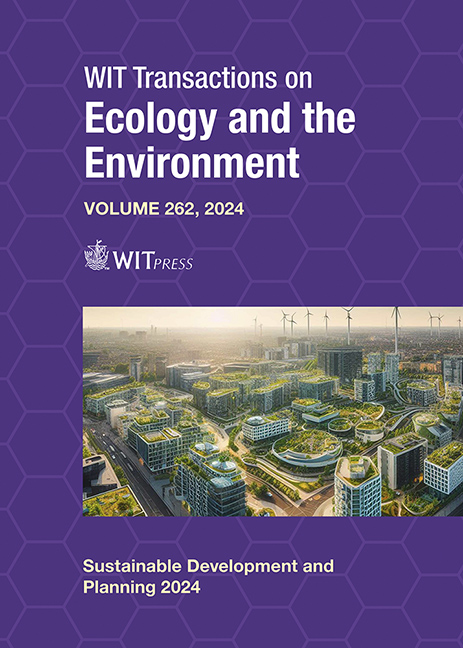EXPERIMENTAL ANALYSIS OF HEAT TRANSFER IN SOIL AT DIFFERENT WATER TABLE LEVELS
Price
Free (open access)
Transaction
Volume
262
Pages
9
Page Range
117 - 125
Published
2024
Paper DOI
10.2495/SDP240101
Copyright
Author(s)
SANDEEP BANDARWADKAR, TADAS ZDANKUS
Abstract
The demand for energy consumption is substantial in countries with cold climates, comprising more than 30% of total energy according to the International Energy Agency. Heat loss into the ground layers through the building’s partition alters the naturally established thermal equilibrium between the atmospheric air and soil layers in winter. Here, the heat dissipation process in the layers of the soil was experimentally investigated at low and high water table levels. The first part of the experiment research included heat transfer from a heating device into the ground. The second part monitored the heat dissipation process in the soil layers until the initial natural thermodynamic equilibrium was attained. A heating device was built and installed in the clay at a depth of 1 metre from the ground surface with a temperature equal to the thermal comfort of the inside building, 20°C. The temperature of the soil layers started to transform from the initial temperature lower than 5°C. It reached a new thermal equilibrium after six days of heating with a stable heat flux value of 117 W/m2. This value describes the heat loss to the atmosphere to maintain a new thermal equilibrium. The temperature of the soil layers returned to the initial value on average two weeks after the heating device was turned off. The investigation has given the ability to analyse the possibility of soil usage for thermal accumulation. The research methodology was tested and analysed for further research on the thermal charging and discharging of the soil and its ability to retain heat for a longer duration.
Keywords
heat transfer in the ground, temperature distribution, thermal equilibrium, water table, heat accumulation





